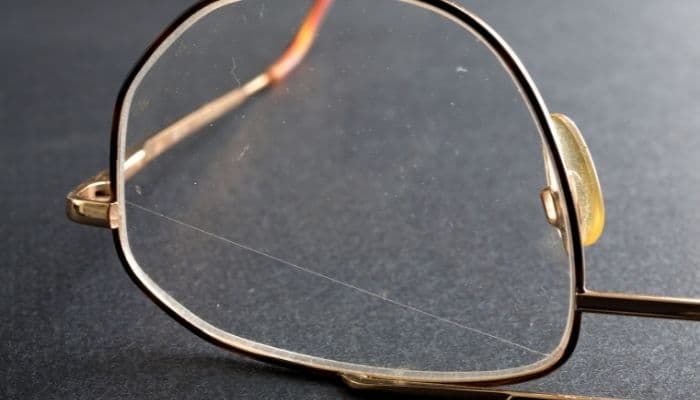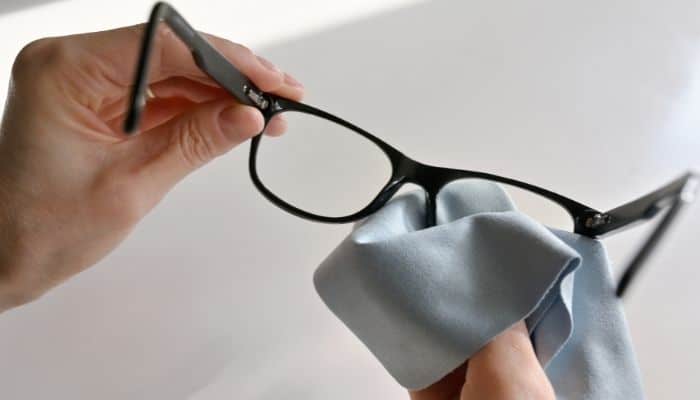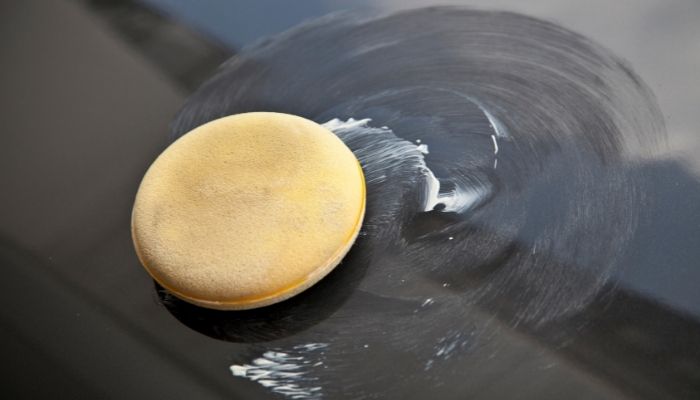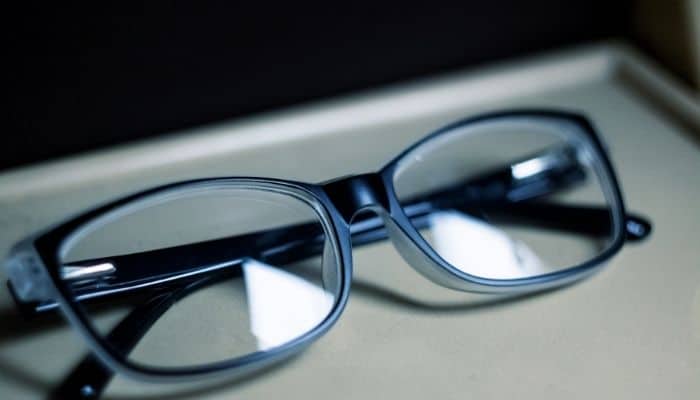
Having a scratch on your lens is as annoying as having an eyelash in your eye. If you can’t replace your lenses right away, here are three quick ways to remove shallow scratches from your favorite pair of glasses.
Note: if you have deep scratches on your lenses, these methods might not be as effective.
(This page contains affiliate links. OGR may receive compensation if you click a link and make a purchase.)
Before You Start
The first step you need to complete before doing any of these methods is cleaning your lenses. Things you’ll need:
- Microfiber cloth or soft cotton cloth
- A drop of dishwashing soap
- Warm tap water
Start by rinsing your lenses with warm water to wash off any surface debris. Next, add a drop of dishwashing liquid to each lens and rub in a circular motion.
Proceed to rinse off the soap with warm running water until soap is dissolved. Lastly, use your clean cloth to dry the lenses.

Important: Always use a clean cloth that has not been laundered with fabric softener. Fabric softeners contain substances that will smear your lenses. The same is true with fabric dryer sheets.
Use Baking Soda Paste

Mixing The Baking Soda Paste
Mix one to two tablespoons of baking soda with warm water until it forms a thick paste. Apply the baking soda-water mixture directly to the scratched part of your lenses using a cotton ball.
Use a consistent, circular motion and gentle pressure without pushing down too hard. After 30 seconds, rinse the paste off the lenses with cold water. Wipe dry with a soft cloth.

Some people use toothpaste as an alternative to the baking soda mixture. Don’t do this!
Many kinds of toothpaste use abrasive substances for whitening purposes, which tend to add even more scratches to your lenses.
Wax-Based Scratch Fillers

Baking soda works great on minor scratches, but deeper scratches can’t be removed and require filling.
Using wax-based products will temporarily fill in the scratches on your eyeglasses and sunglasses, but must be applied repeatedly.
The same wax you would use on your car will work on your lenses. Simple vehicle wax can be used sparingly to fill in minor scratches.
Start by using the same lens cleaning steps detailed above. Apply the wax in the same way you apply the baking soda mixture but instead of using a cotton ball, use a soft microfiber cloth.
Keep rubbing the lens until the scratch is filled in.
Glass Etching Products
Sometimes you’ll find the coating applied on your lenses, such as anti-reflective or blue light coating, is scratched.
Often, scratches affect these coatings while the lenses beneath them remain just fine.
To remove a damaged coating from your lenses, using a glass etching cream is recommended. It’s a highly acidic solution that will dissolve the coating and not harm the lens underneath.
Some important points to know before using glass etching cream:
- Do NOT use on glass lenses
- Protective gloves and goggles are recommended during use
- Lenses should be removed from the frame before application
Applying the Cream
As always, apply to clean and dry lenses. Using a cotton swab to apply the cream in a thin layer gives you more control during use.
There is no need to rub the cream into the lens. Just placing some cream on the surface of the lens and allowing it to sit will work just fine.
If you need to, set a timer and make sure that the cream doesn’t sit longer than 5 minutes.
Make sure you wear protective gloves and wash the cream off using soap and water. Rinse well.
Finally, wipe the lenses dry with a soft microfiber cloth.
If there is any residual coating left, repeat the process until all of the damaged coating is removed.
Tips to Prevent Scratches

No one wants to replace scratched lenses constantly. However, you can extend the life of your glasses and save money in the long run by developing good eyeglass care habits.
- Clean your lenses with appropriate cleaners made for eyeglass lenses. Don’t use household cleaners like Windex on your glasses.
- Avoid paper products. Paper products like paper towels and toilet paper contain wood fibers that can scratch the surface of your lens.
- Always use an eyeglass case to store your glasses. Whether it’s a hard case or a soft pouch, a case will protect your lenses while not in use.
Don’t place your glasses with the lens face down. Always make sure to fold the temples and place your glasses with the lenses facing up when you remove them.
Most Scratch-Resistant Lenses
Glass is the most scratch-resistant option for eyeglass lenses. Despite this, glass is no longer readily used because of its many safety and comfort concerns.
If a glass lens breaks, it shatters and can injure the eye. Glass lenses offer superior optics, but must be specially treated for impact resistance.
This is a complicated process that not many labs provide these days. Also, glass lenses are much heavier than plastic lenses, so they can make your eyeglasses less comfortable to wear.
When To Replace Your Glasses
The above methods work well in a pinch, but if looking through your lenses obstructs your vision, causes dizziness, or gives you a headache, it’s time to look into replacing them.
When you choose your new eyeglass lenses, make sure to ask about scratch-resistant coating options. If your lenses tend to get scratched, these coatings might save you money in the long run.
Cynthia is a published author and freelance writer that has enjoyed a career in the eyewear industry for more than 25 years. In 2016, she decided to combine her passion for writing with her experience as an Optician and launch her company, Pizzini Writes. She now dedicates her days to writing about the latest optical-related news and trends for various publications and independent retailers.
Learn more about her at www.pizziniwrites.com